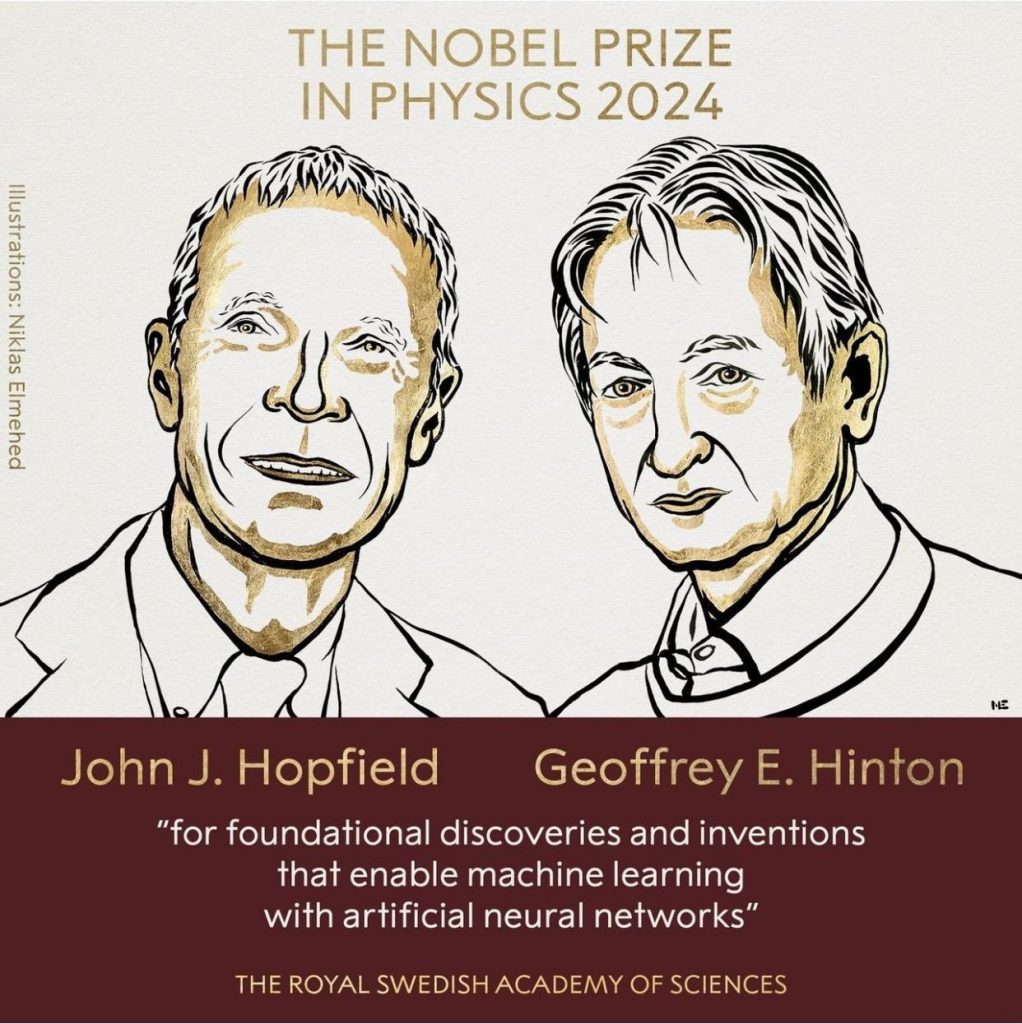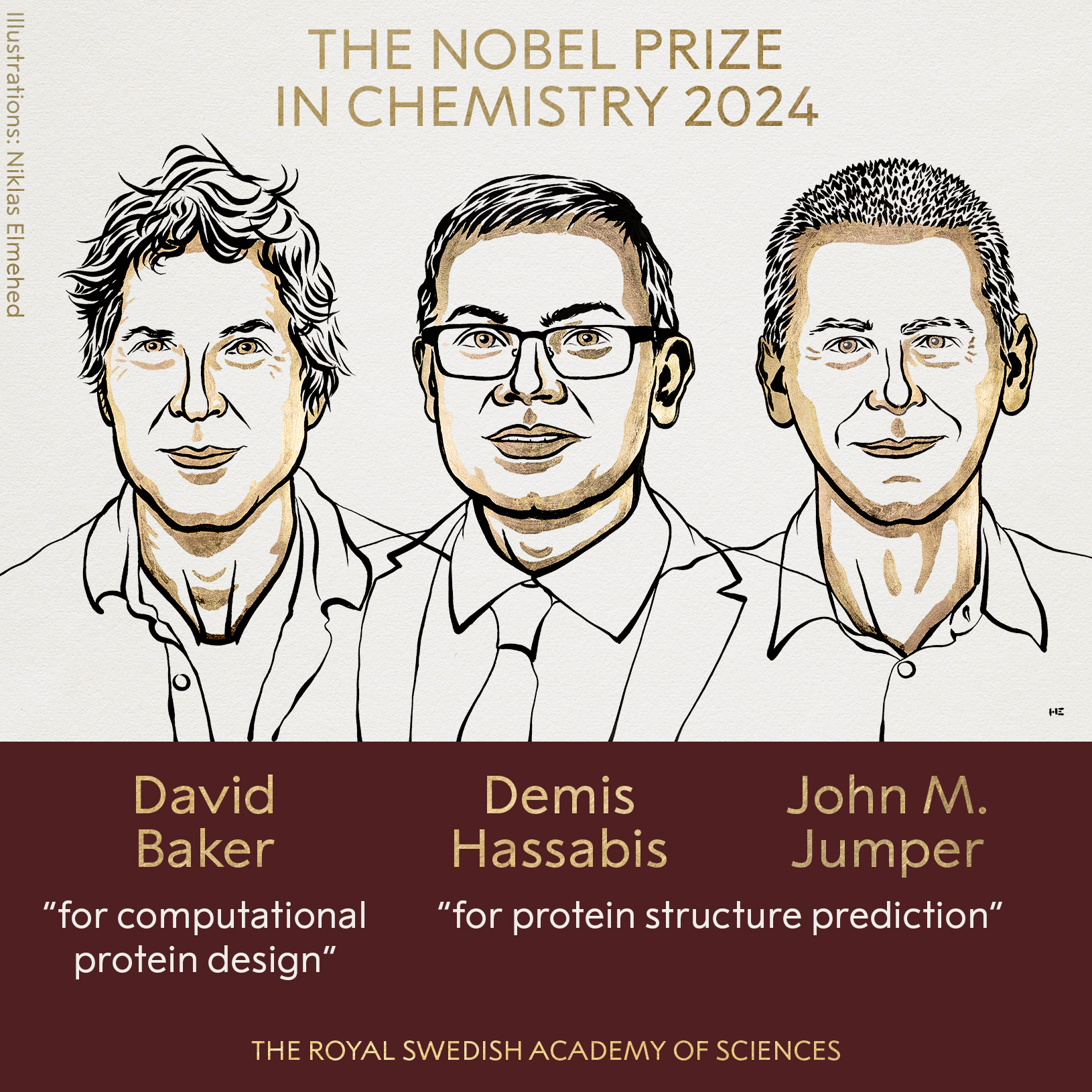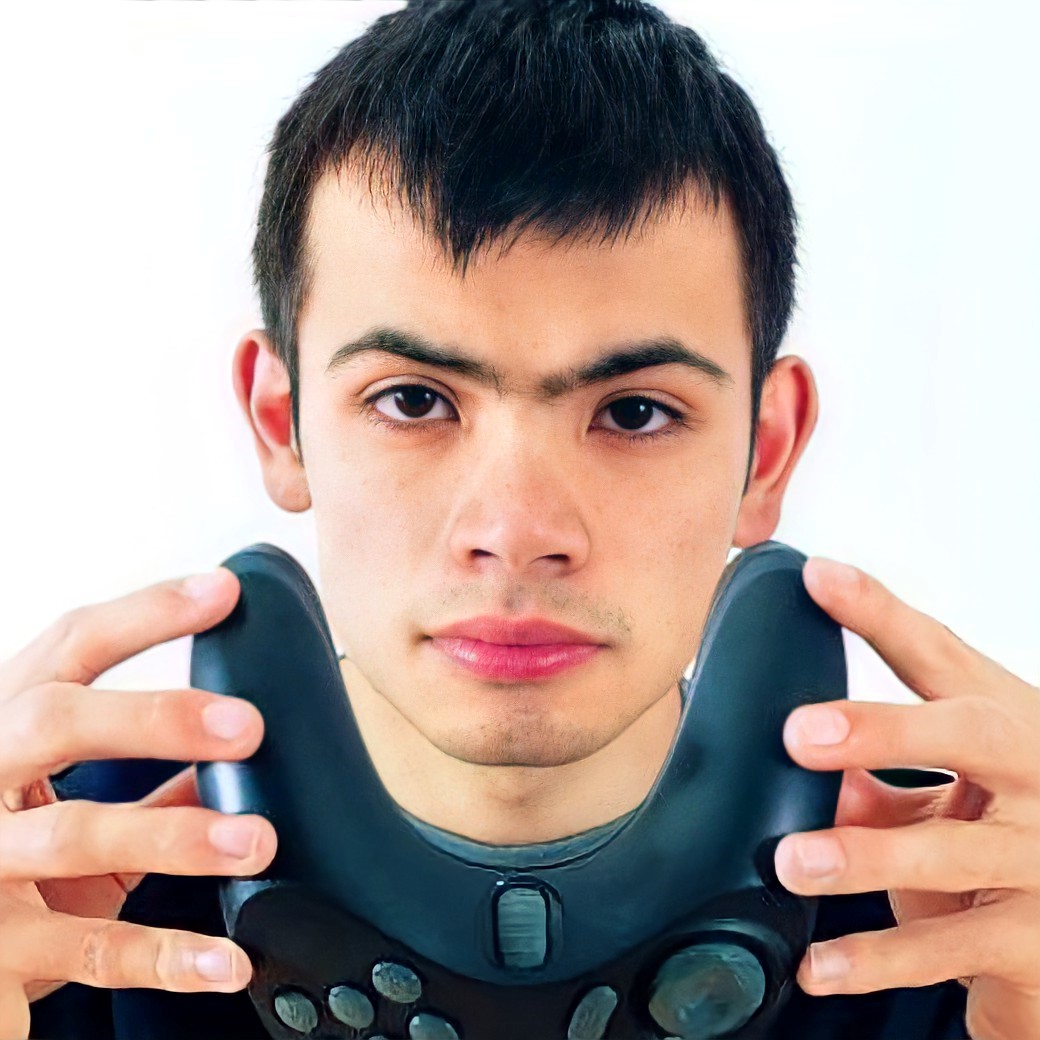Lecture 13
Nobel Prize for Machine Learning; Midterm I Review
October 10, 2024
Nobel Prize in Physics and Chemistry in 2024
The Royal Swedish Academy of Sciences has decided to award the 2024 Nobel Prize in Physics to U.S. scientist John J. Hopfield and British-Canadian Geoffrey E. Hinton for discoveries and inventions in ____________________, a field that enables computers to learn from and make predictions or decisions based on data, which paved the way for the artificial intelligence boom.
Nobel Prize in Physics and Chemistry in 2024


2024 Nobel Prizes: Laying the Foundations for ML
The Breakthroughs Behind AI’s Modern Revolution
- Recognizes groundbreaking contributions to ML and AI
- Hopfield and Hinton: Deep learning and neural network architecture
- Hassabis and Jumper: AI and protein folding breakthroughs
- Why It Matters: These discoveries laid the foundation for the ML revolution we are living through today
2024 Nobel Prizes: Laying the Foundations for ML
Deep Learning
Geoffrey Hinton’s Innovations:
- Developed backpropagation, a key algorithm for training deep neural networks
Deep learning: Multi-layered networks that autonomously learn complex patterns
Impact on AI:
- Enabled machines to learn from data without explicit instructions
- Core technology behind language models (like ChatGPT), image recognition, and more
2024 Nobel Prizes: Laying the Foundations for ML
ML Today
The Scale of Modern AI:
- Deep neural networks now contain billions to trillions of parameters
- Hugging Face: Open-source community for ML and AI
Applications: Voice assistants, self-driving cars, medical diagnostics, and so on.
Importance of Data and Computing Power:
- The explosion in data and cloud computing has fueled rapid progress in AI
- AI models like GPT-4 are direct descendants of Hopfield and Hinton’s early work
2024 Nobel Prizes: Laying the Foundations for ML
Demis Hassabis’s Story: From Chess to AI Mastery


- Boardgame Master Enters the Protein Olympics:
- Early Life:
- Started playing chess at age 4, achieved master level at 13
- Transitioned to programming and video game development as a teenager
2024 Nobel Prizes: Laying the Foundations for ML
Demis Hassabis’s Story: From Chess to AI Mastery

Co-founded DeepMind in 2010, a company that revolutionized AI for boardgames
DeepMind’s Global Attention:
- Sold to Google in 2014
- In 2016, DeepMind’s AI defeated the world champion of Go, a breakthrough in AI’s problem-solving abilities
2024 Nobel Prizes: Laying the Foundations for ML
Demis Hassabis’s Story: From Chess to AI Mastery

- AI’s True Purpose for Hassabis:
- Games were just a stepping stone to developing AI for more meaningful applications, like predicting protein structures
2024 Nobel Prizes: Laying the Foundations for ML
The Future of Machine Learning
- What’s Next?:
- AI is rapidly evolving, expanding into areas like business, economics, climate science, healthcare, personalized medicine, and so on.
- Challenges include transparency, ethics, and responsible AI development
- Ethical Considerations:
- How do we ensure AI benefits humanity and minimizes harm?
- Final Thoughts:
- As AI continues to grow, it holds the potential to solve many of humanity’s greatest challenges
Midterm Exam I Review
Questions 10-13
For Questions 10-13, consider the following data.frame, netflix_data, displayed below:
Questions 10-13
Question 10
What type of variable is FavoriteGenre in the dataset?
- Nominal
- Ordinal
- Interval
- Ratio
FavoriteGenre: User’s favorite genre
Questions 10-13
Question 11
What type of variable is SubscriptionPlan in the dataset?
- Nominal
- Ordinal
- Interval
- Ratio
SubscriptionPlan: Type of Netflix subscription
Questions 10-13
Question 12
What type of variable is LastLoginTime in the dataset?
- Nominal
- Ordinal
- Interval
- Ratio
LastLoginTime: Time of last login in hours since midnight
Questions 10-13
Question 13
What type of variable is Satisfaction in the dataset?
- Nominal
- Ordinal
- Interval
- Ratio
Satisfaction: User satisfaction rating (1 to 5 stars)
Question 20
Which of the following R code correctly assigns the nycflights13::airlines data.frame to the variable df_airlines? (Note that df_airlines is simply the name of the R object and can be any valid name in R.)
nycflights13::airlines <- df_airlinesdf_airlines <- nycflights13::airlinesnycflights13::airlines <= df_airlinesdf_airlines == nycflights13::airlines
Question 21
Which of the following R code correctly calculate the number of elements in a vector x <- c(1,2,3,4,5)?
nrow(x)sd(x)sum(x)length(x)
Question 22
Write the R code to create a new variable called result and assign to it the sum of 5 and 7 in R.
Question 22
Write the R code to create a new variable called result and assign to it the sum of 5 and 7 in R.
Question 23
Given the data.frame df with variables age and name, which of the following expressions returns a vector containing the values in the age variable?
df:agedf::agedf$age- Both b and c
Question 24
The expression as.numeric("123") will return the numeric value 123.
- True
- False
Question 25
What is the result of the expression (4 + 3) ^ 2 in R?
- 3.5
- 9
- 14
- 49
Question 26
Given vectors a <- c(1, 2, 3) and b <- c(4, 5, 6), what is the result of a + b?
c(5, 7, 9)c(4, 5, 6, 1, 2, 3)c(1, 2, 3, 4, 5, 6)Error
Question 27
Which of the following functions is part of the tidyverse package and is used to read a CSV file into a data.frame?
read.csv()read_csv()read.table()load()
Question 28
To use the function skim() from the skimr package, you first need to load the package using the R code ________.
library(skimr)load(skimr)skimrskimr::skim
Question 29
The filter() function can use both logical operators like & and comparison operators like > within the same logical condition.
- True
- False
Question 30
Consider the following data.frame df0:
| x | y |
|---|---|
| 1 | 4 |
| 2 | NA |
| Na | 6 |
What is the result of mean(df0$y)?
- 4
NA- 5
- 6
Questions 31-32
Consider the following data.frame df for Questions 31-32:
| id | name | age | score |
|---|---|---|---|
| 1 | Alice | 25 | 85 |
| 2 | Bob | 30 | 90 |
| 3 | Charlie | 35 | 75 |
| 4 | David | NA | 80 |
| 5 | Eve | 45 | NA |
Question 31
Which of the following code snippets keeps observations where score is between 80 and 90 inclusive?
df |> filter(score > 80 & score < 90)df |> filter(score >= 80 & score <= 90)df |> filter(score >= 80 | score <= 90)df |> filter(score > 80 | score < 90)
Question 32
Which of the following expressions correctly keeps observations from df where the age variable has missing values?
df |> filter(is.na(age))df |> filter(!is.na(age))df |> filter(age == NA)df |> filter(age != NA)- Both a and c
- Both b and d
Question 33
The arrange() function can sort data based on multiple variables.
- True
- False
Question 34
Consider the following data.frame df3:
| id | value |
|---|---|
| 1 | 10 |
| 2 | 20 |
| 2 | 20 |
| 3 | 30 |
| 4 | 40 |
| 4 | 40 |
| 5 | 50 |
Which of the following code snippets returns a data.frame of unique id values from df3?
df3 |> select(id) |> distinct()df3 |> distinct(value)df3 |> distinct(id)- Both A and C
Question 35
Which of the following code snippets correctly renames the variable age to years in df?
df |> rename(years = age)df |> rename(age = years)df |> rename("age" = "years")df |> rename_variable(age = years)
Question 36
Which of the following code snippets correctly removes the age variable from df?
df |> select(-age)df |> select(-"age")df |> select(!age)df |> select(, -age)df |> select(desc(age))
Question 37
Which of the following code snippets filters observations where age is not NA, then arranges them in descending order of age, and then selects the name and age variables?
df |> filter(!is.na(age)) |> arrange(desc(age)) |> select(name, age)df |> select(name, age) |> arrange(desc(age)) |> filter(!is.na(age))df |> arrange(desc(age)) |> filter(!is.na(age)) |> select(name, age)df |> filter(is.na(age)) |> arrange(age) |> select(name, age)
Question 38
Consider the two related data.frames, df_1 and df_2:
df_1
| id | name | age |
|---|---|---|
| 1 | Alice | 19 |
| 2 | Bob | 21 |
| 4 | Olivia | 20 |
df_2
| id | major |
|---|---|
| 1 | Economics |
| 2 | Business Administration |
| 3 | Data Analytics |
| id | major | name | age |
|---|---|---|---|
| 1 | Economics | Alice | 19 |
| 2 | Business Administration | Bob | 21 |
| 3 | Data Analytics | NA | NA |
df_1 |> left_join(df_2)df_2 |> left_join(df_1)- both a and b
Question 39
In R, what does the function sd(x) compute, and why can it be more useful than var(x)?
Question 40
What is the primary limitation of Hadoop’s MapReduce, and how is it addressed by technologies like Apache Storm and Apache Spark?